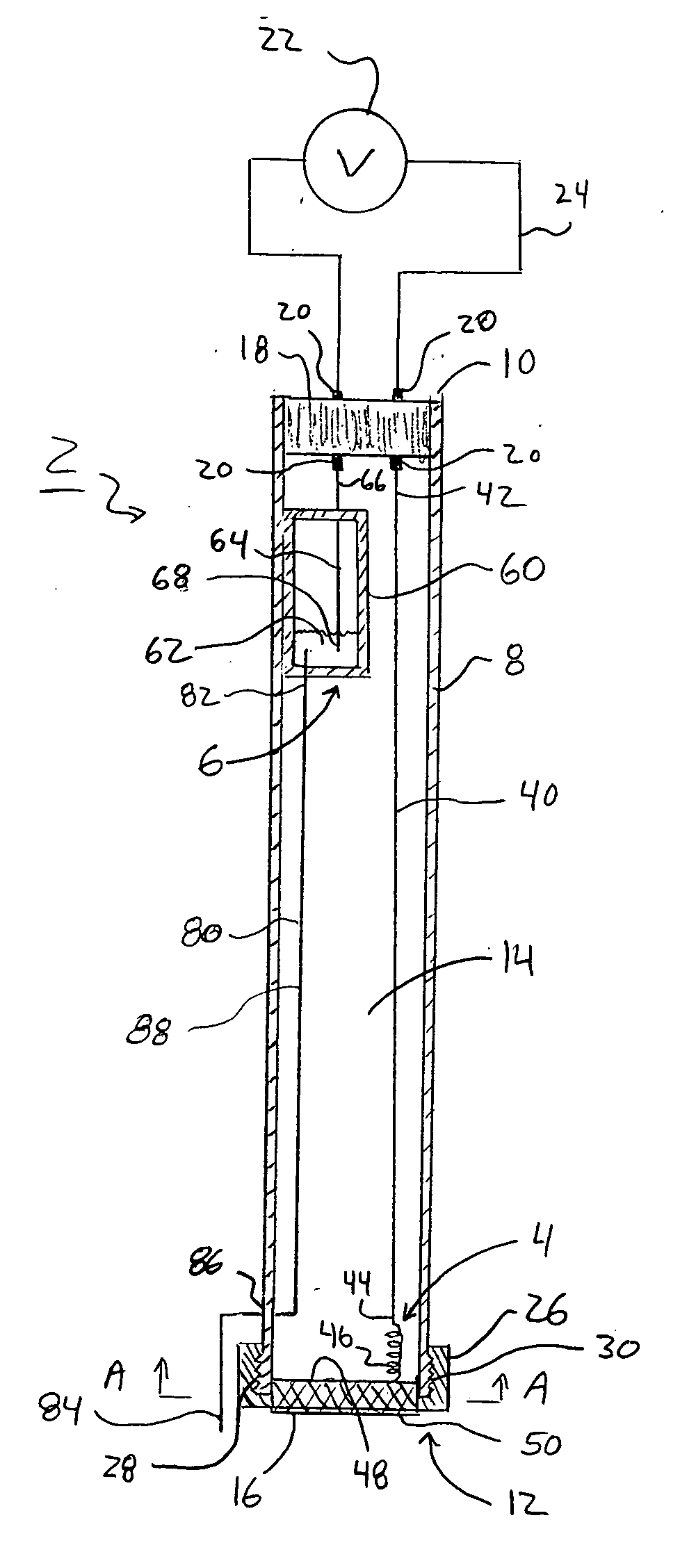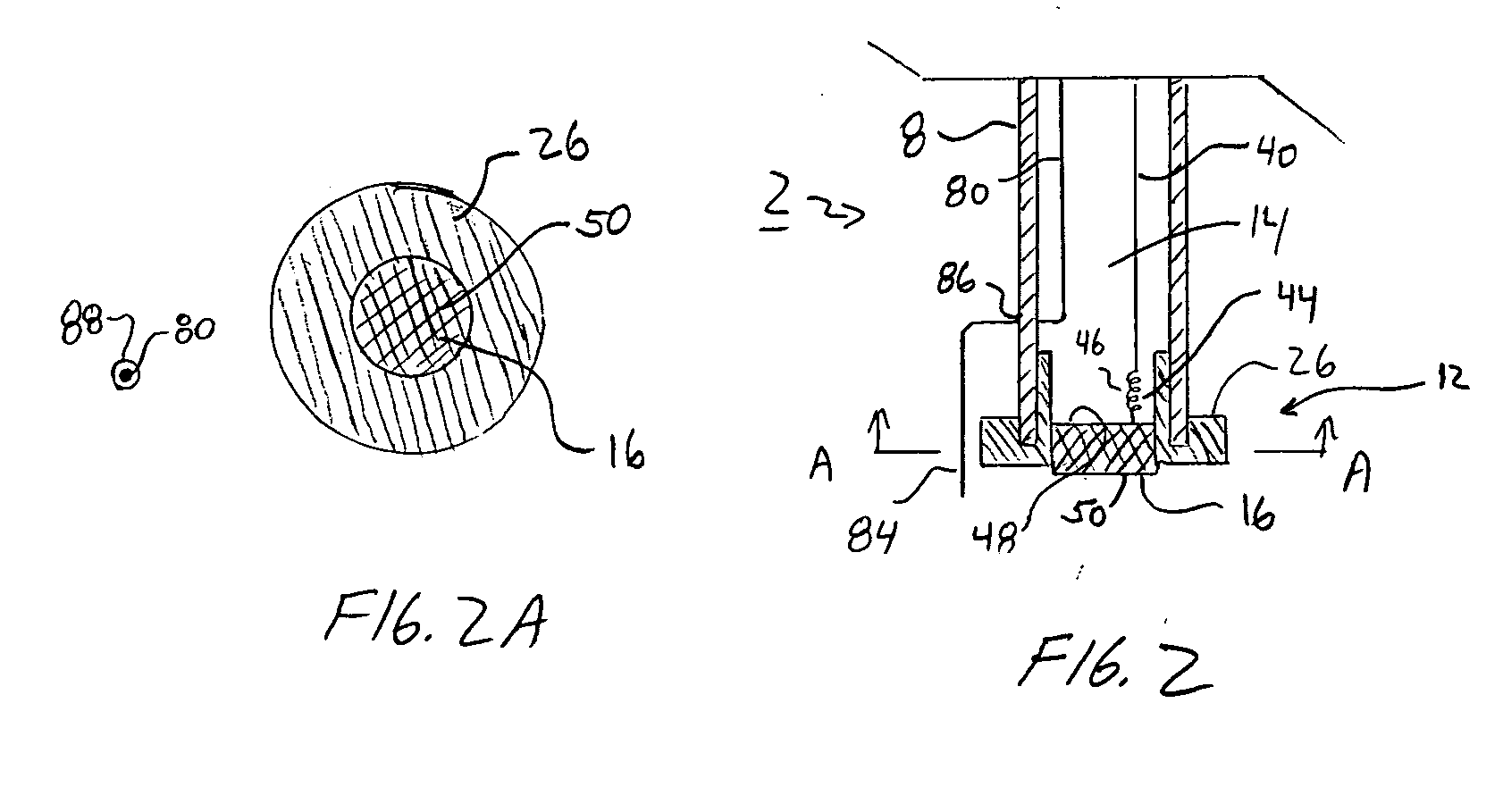Ion selective electrode
a selective electrode and electrode technology, applied in the direction of liquid/fluent solid measurement, material electrochemical variables, instruments, etc., can solve the problems of reference electrode failure, reference electrode failure, reference electrode failure,
- Summary
- Abstract
- Description
- Claims
- Application Information
AI Technical Summary
Benefits of technology
Problems solved by technology
Method used
Image
Examples
Embodiment Construction
[0021]FIGS. 1, 1A, 2, 2A, 3, 3A, 4, 4A, and 5 illustrate an ion selective electrode (ISE) 2. The ion selective electrode 2 may be used to determine the concentration of one or more analytes or species contained within a sample solution. As just one example, the ISE 2 may be used to measure the concentration of hydrogen ions in a solution, which can then be used to determine the solution's pH. The ISE 2 includes two electrodes, an indicator electrode 4 and a reference electrode 6. As explained below, the reference electrode 6 is physically separated from the indicator electrode 4 and does not directly make contact with a sample solution.
[0022] As seen in FIGS. 1, 1A, 2, 2A, 3, 3A, 4, 4A, and 5 the ISE 2 includes a housing 8 or electrode body. The housing 8 may be formed from a non-conductive material such as, for example, plastic-based materials. The housing 8 generally includes a proximal end 10 and a distal end 12 and a lumen 14 passing there between. In one aspect of the ISE 2, t...
PUM
| Property | Measurement | Unit |
|---|---|---|
| diameter | aaaaa | aaaaa |
| diameter | aaaaa | aaaaa |
| diameter | aaaaa | aaaaa |
Abstract
Description
Claims
Application Information
 Login to View More
Login to View More - R&D
- Intellectual Property
- Life Sciences
- Materials
- Tech Scout
- Unparalleled Data Quality
- Higher Quality Content
- 60% Fewer Hallucinations
Browse by: Latest US Patents, China's latest patents, Technical Efficacy Thesaurus, Application Domain, Technology Topic, Popular Technical Reports.
© 2025 PatSnap. All rights reserved.Legal|Privacy policy|Modern Slavery Act Transparency Statement|Sitemap|About US| Contact US: help@patsnap.com



